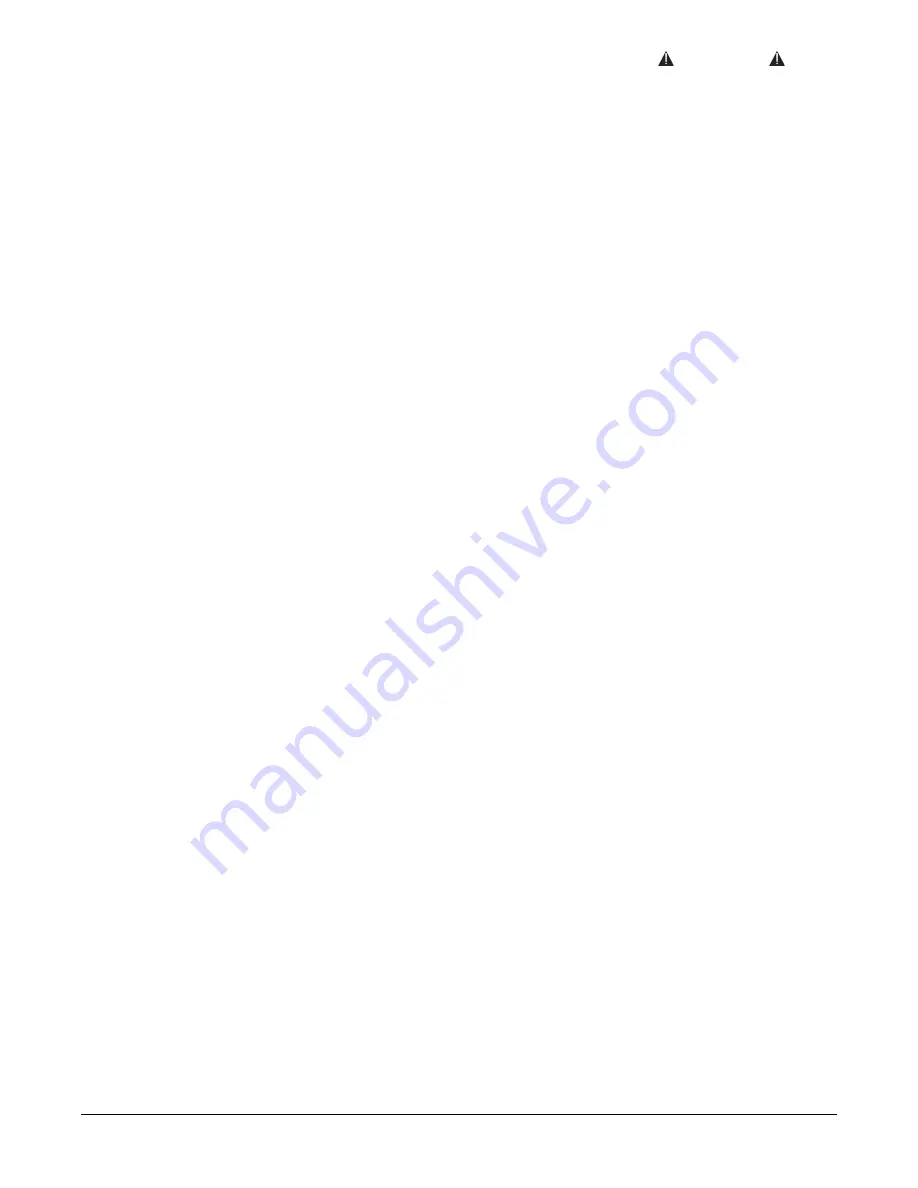
520-143-000
8/00
Models EB3-M/EB4-M/EB80M
Page 3
the surfaces of the valve body where the end caps mount. Material may remain from
the old gasket. Old material not cleaned from this area may cause air leakage after
reassembly. Take care that the bumper stays in place allowing the sleeve to press in
all the way. Reinstall the spool the opposite end cap, gasket and bumper on the valve
body. After inspecting and cleaning the gasket surfaces on the valve body and
intermediate, reinstall the valve body on the pump using new gaskets. Tighten the four
hex head capscrews evenly and in an alternating cross pattern.
PILOT VALVE ACTUATOR
The bushings for the pilot valve actuators are threaded into the intermediate
bracket from the outside. The plunger may be removed for inspection or replacement
from the inside by removing the air distribution valve body and the pilot valve body from
the pump. The plungers should be visible through the intermediate from the top.
Depending on their position, you may find it necessary to use a fine piece of wire to
pull them out. Under rare circumstances, it may become necessary to replace the o-
ring seal.
When reinserting an externally serviceable pilot valve, push both plungers out of
the path of the pilot valve. This will prevent damage to the plungers and pilot valve.
Service Note: If a problem arises with the pilot valve, it is usually corrected by
replacing only o-rings. Always grease the spool prior to inserting into the sleeve. If the
sleeve is removed from the body, reinsertion must be from the same side it was
removed from, the chamfered side. Again, grease the o-rings so that it slides into the
body. Make sure the retaining ring has securely been inserted around the sleeve.
AIR EXHAUST
If a diaphragm fails, the pumped liquid or fumes can enter the air end of the pump,
and be exhausted into the atmosphere. When pumping hazardous or toxic materials,
pipe the exhaust to an appropriate area for safe disposition.
This pump can be submerged if materials of construction are compatible with the
liquid. The air exhaust must be piped above the liquid level. Piping used for the air
exhaust must not be smaller than 1" (2.54 cm). Reducing the pipe size will restrict air
flow and reduce pump performance. When the product source is at a higher level than
the pump (flooded suction), pipe the exhaust higher than the product source to
prevent siphoning spills.
Freezing or icing-up of the air exhaust can occur under certain temperature and
humidity conditions. Use of an air dryer unit should eliminate most icing problems.
BETWEEN USES
When the pump is used for materials that tend to settle out or transform from liquid
to solid form, care must be taken after each use or during idle time to remove them
and flush the pump as required to prevent damage.
In freezing temperatures the pump must be completely drained when idle. This
model must be tilted to allow the liquid from the chambers to run out of the discharge
port.
CHECK VALVE SERVICING
Need for inspection or service is usually indicated by poor priming, unstable
cycling, reduced performance or the pump’s cycling but not pumping.
DIAPHRAGM SERVICING
Remove the twelve bolts (six each side) securing the manifold assemblies to the
outer chambers. Remove the eight bolts securing the outer chamber to the inner
chamber. Remove the diaphragm assembly (outer plate, diaphragm, inner plate) by
turning the assembly counterclockwise using a 1
1
/
8
" (3.17 cm) wrench on the outer
plate lugs. To disassemble the diaphragm assemblies, screw into the inner plates two
threaded pins, place the pins in a vise and turn the outer plate counterclockwise using
the 1
1
/
8
" wrench. The interior components consisting of shaft seals, sleeve bearings
and bearing retainers are now accessible for service.
Procedures for reassembling the diaphragms are the reverse of the above. The
diaphragms must be installed with their natural bulge to the outside, toward the outer
CAUTION
In the event of diaphragm rupture,
pumped material may enter the air end
of the pump, and be discharged into the
atmosphere. If pumping a product which
is hazardous or toxic, the air exhaust
must be piped to an appropriate area for
safe disposal.
Содержание SandPIPER EB3-M
Страница 8: ......


























